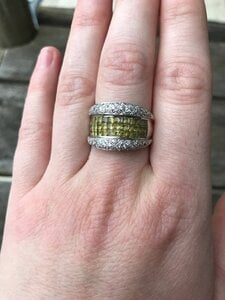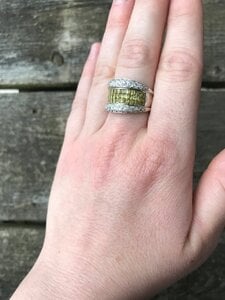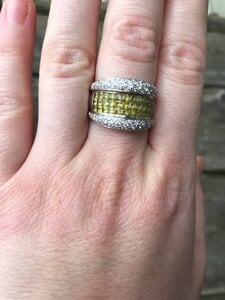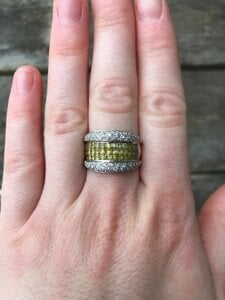Hi everyone,
I'm trying to determine if these yellow gemstones are sapphires or topaz. I don't know if there is any way to be certain from photos, but I'd still really appreciate any opinions. The ring is set in 18K white gold with diamonds. The yellow stones have a hardness of 8 (when I set my diamond tester at level 4 based on the size of the stones) which has led me to believe they are either sapphires or topaz. Thanks so much to anyone who can help!




I'm trying to determine if these yellow gemstones are sapphires or topaz. I don't know if there is any way to be certain from photos, but I'd still really appreciate any opinions. The ring is set in 18K white gold with diamonds. The yellow stones have a hardness of 8 (when I set my diamond tester at level 4 based on the size of the stones) which has led me to believe they are either sapphires or topaz. Thanks so much to anyone who can help!








300x240.png)